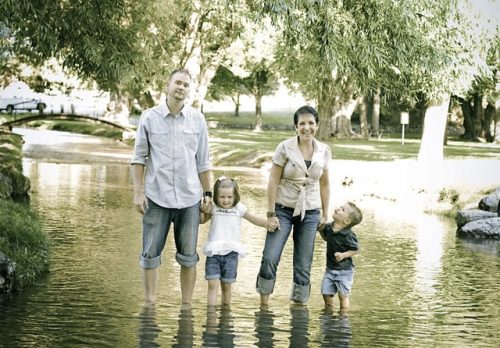In the complexity of family life, divorce can be a thread that unravels the familiar patterns, leaving most kids to navigate a new maze of experiences and emotions. We’re not just learning about what happens right after something big and tough, like when parents decide not to live together anymore. We’re also seeing how amazing and strong kids can be, and how they can change and learn to be happy again.
In this article, we want to show all the different ways kids can learn, change, and become steady and strong in a world where their parents live apart. It’s a story of risk and resiliency perspective about changing, being brave, and having hope. We’ll share secrets about how kids heal and grow after going through something really hard.

Emotional Challenges Of Separation For A Kid
Embarking on the emotional rollercoaster that is often accompanied by their parents’ divorce, kids face a myriad of emotional challenges. From the initial shock and grief to the eventual acceptance and adaptation of the child, this journey is marked by a spectrum of feelings and experiences.
Grief And Loss
For a child, the divorce of parents is akin to the loss of a familiar world. The home they knew, the family dinners, and the shared holidays with their parents suddenly become memories of a past life. This profound sense of loss can manifest in various forms – sadness, anger, or even denial. The reactions of a child may long for the return of the past, struggling to accept the new reality.
Anxiety And Insecurity
With the family unit undergoing a seismic shift, kids often grapple with their own feelings of anxiety and insecurity. Questions following the parent’s divorce plague their minds:
- Where will I live?
- Will I have to change schools?
- Will my parents still love me the same?
This anxiety can extend to fears about the future of most of these kids’ lives and the stability of their remaining family relationships.
Coping Mechanisms
Despite the whirlwind of emotions, kids are incredibly resilient. This resilience to the uncertainties brought by divorce is often seen in their coping mechanisms. Some find solace in art or music, others in sports or friendships. Then there are those who turn inward, finding strength in solitude and reflection.
Changes In Family Dynamics Proceeding Divorce
The ripple of divorce extends far beyond the parents, deeply altering the family dynamics for the kids involved. Transitioning from a two parents to a single-parent household or adapting to blended family structures presents its own set of challenges and adjustments.
Here, we explore how these changes impact the daily lives and overall well-being of kids, focusing on the intricacies of evolving family relationships.
Adjusting To Single-Parent Households
Transitioning to a single-parent household after divorce marks a significant change in a kid’s daily living. From logistical shifts like moving homes or adjusting to new schedules to emotional adjustments like missing the absent parent, the challenges of kid adjustment are multifaceted.
New Family Structures
After divorce, many kids find themselves part of new family structures and living arrangements such as stepfamilies. Integrating into this new dynamic can be complex, involving forming relationships with stepparents and stepsiblings.
Navigating loyalty conflicts and establishing new bonds requires time and patience.

Embracing The Role Of Extended Family
In the wake of divorce, the role of extended family becomes more significant than ever. Grandparents, aunts, uncles, and cousins can provide a vital support network. They offer not just emotional support but also continuity and a sense of belonging.
This highlights the importance of extended family in providing stability and love during a time of upheaval, illustrating how these bonds can help anchor a kid’s relationship with other family members during times of change.
Social Implications Of Divorce
The social fabric of a kid’s daily living can be significantly altered by the experience of their parents’ divorce. This section examines the far-reaching implications of this familial change, from shifts in peer relationships to impacts on academic and extracurricular involvement. Understanding these social implications is key to supporting kids as they navigate their new reality.
1. Peer Relationships
The ripple effects of divorce often extend into a kid’s social sphere, particularly in their relationships with peers. Kids may feel different from other parent and their friends, especially those with intact families, leading to feelings of isolation or embarrassment for many parents.
In some cases, they might face uncomfortable questions about their parent’s divorce or even bullying. This shows how these changes can impact a kid’s social interactions and friendships, exploring ways to foster understanding and empathy among peers.
2. Academic Performance
Divorce can significantly impact a kid’s performance in school. Emotional distress may lead to:
- Difficulties in concentration
- Decreased motivation
- Behavioral changes
All of which, marital conflict and parental conflict such as divorce can affect academic achievement. Here, we see the challenges kids face in their academic journey post-divorce.
3. Extracurricular Activities
Engagement in the same school and extracurricular activities can play a dual role in the daily living of a kid dealing with parental separation or divorce.
For some, these activities provide a much-needed escape, a space where they can feel normal and enjoy a sense of accomplishment. For others, the additional commitments can become overwhelming against the backdrop of home changes.
Long-Term Effects Of Divorce
Divorce is not just a momentary disruption but can have lasting effects on a child’s emotional and psychological development. Here, we explore the long-term effects of parental divorce, considering both the challenges and the unexpected growth opportunities that arise.
We look at how divorce can shape a child’s future perspectives on relationships, their emotional resilience, and their overall approach to life’s challenges.
Understanding these long-term ramifications is crucial for providing the right support and guidance to kids adjustment as they grow into adulthood, ensuring they emerge stronger and well-adjusted.
Impact Of Divorce On Future Relationships
The experience of parental separation and divorce can shape a child’s perspective on relationships and commitment well into adulthood. Concerns about trust, the fear of repeating their own parents’ mistakes, or the challenge of forming deep emotional connections can emerge.
It’s absolutely vital to delve into the long-term implications of parental divorce on a child’s future romantic and personal relationships, discussing ways to nurture a healthy outlook on relationships despite their early family experiences.
Emotional Resilience
One of the most profound long-term effects of parental divorce is the development of emotional resilience. Kids who navigate the complexities of divorce often emerge with a deeper understanding of themselves and a greater capacity for empathy.
Focus on the growth and strength that can arise from adversity, emphasizing the role of supportive environments in fostering resilience.

Therapy And Support Systems
The role of therapy and support systems in helping kids cope with the long-term effects of their parents’ separation and divorce is crucial. To seek professional help and guidance can provide kids with the tools to process their emotions healthily and build coping strategies for future challenges. If anything, it’s essential to underscore the importance of:
- Counseling
- Support groups
- Other resources
These interventions can aid in the emotional well-being, mental health, and long-term adjustment of kids affected by divorce with the help of mental health professionals.
Positive Outcomes
Amidst the challenges of a parent’s divorce, there are often unexpected positive outcomes that can emerge for kids.
By recognizing and nurturing these positive aspects, we can help kids find balance and positivity in their parents’ marriage and divorce journey, turning a challenging experience into a foundation for a resilient and fulfilling future.
Experiencing Your Own Personal Growth
While the journey of parent-child relationship through a parent’s divorce can be fraught with challenges, it also offers opportunities for significant personal growth. Kids who have navigated these waters often develop a heightened sense of empathy and understanding toward others’ feelings and situations. They may also acquire:
- Advanced coping skills
- Emotional intelligence
- A mature perspective on life’s complexities at a younger age
Facing and overcoming such a profound challenge can foster resilience, self-awareness, and a deeper appreciation for the nuances of human relationships.
Having Strengthened Relationships With Your Mom and Dad
In many cases, the post-divorce period of child custody can lead to stronger, more meaningful relationships between kids and their parents. With the necessity for more serious parenting skills, open communication, and understanding of each other’s needs, bonds can deepen.
Kids may get more quality time with each parent, leading to stronger individual relationships with one parent. These evolving relationships can be a silver lining, providing a foundation for lifelong closeness and mutual respect.
Gaining Independence And Experiencing Maturity
The experience of adapting to living proceeding a parent’s divorce often accelerates a child’s journey toward independence and maturity. Faced with significant changes, kids learn to:
- Adapt
- Make decisions
- Handle responsibilities earlier than their peers
This newfound independence can manifest in various forms, from managing daily tasks to developing the ability to navigate complex emotional landscapes. These experiences shape kids into self-reliant and mature individuals equipped with skills that will serve them well throughout their lives.
Helping Kids Move Forward
It’s of utmost importance that adults help kids move forward from this kind of significant event. Divorce can be traumatic for kids. But with the right guidance, resources, and coping strategies, parents and guardians can help their children through everything.
To Wrap Up
The experience of a child navigating through the aftermath of their parent’s divorce is both intricate and profound. As we’ve journeyed through the various facets of their world, from the tremors of emotional challenges to the unexpected vistas of personal growth, it’s evident that each child’s path is unique.
Yet, amidst these individual stories, a common thread of resilience and adaptability emerges, weaving a tapestry of strength and maturity. As guardians, educators, and compassionate observers, our role is to extend a hand of understanding and support, helping these young navigators chart a course through uncharted waters. With empathy, patience, and love, we can help them turn a story of disruption into one of hope and endless possibilities.
Daily Living Of A Child Proceeding Parents Divorce Frequently Asked Questions (FAQ)
How does parents’ divorce affect child development?
At what age is a child most affected by divorce?
How do kids cope with parents who are going through divorce?
What happens to a child when parents divorce?
Is divorce traumatic for a child?
Do kids with parents going through divorce have more behavior problems?
Are kids happier with parents undergoing divorce?
What do you say to a child whose parents going through divorce?
How does divorce affect adult kids?
What is the impact of divorce?
How does divorce affect people’s lives?
How does divorce affect kids positively?
Do children of divorce have relationship problems?

































